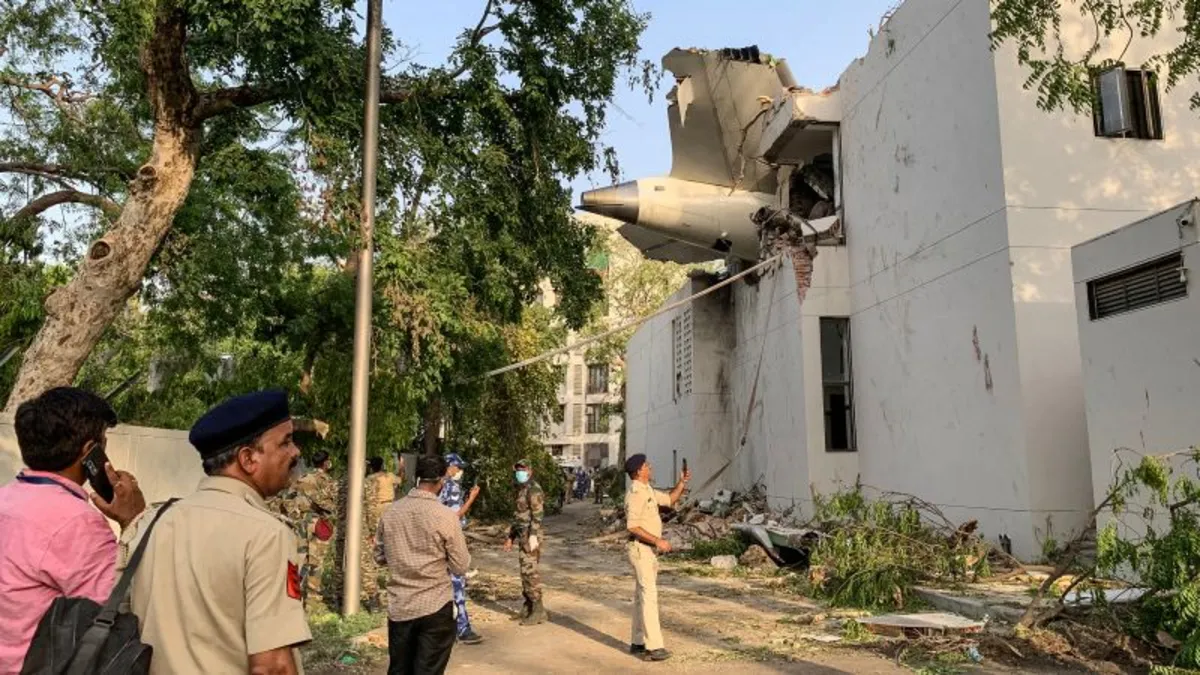
An official report on the world’s deadliest aviation accident in a decade has provided critical insights while raising further questions. On June 12, Air India flight AI171, which had just taken off from Ahmedabad’s Sardar Vallabhbhai Patel International Airport, tragically crashed in a densely populated area of India’s western city of Ahmedabad. This catastrophic incident resulted in the loss of 241 lives, including all but one of the 242 individuals aboard the flight and 19 others on the ground.
The preliminary report by India’s Aircraft Accident Investigation Bureau (AAIB) has revealed a significant detail regarding the crash: fuel supply to both engines was cut during the critical moments of ascent. According to the report, the aircraft’s “black box,” which serves as a flight data recorder, indicated the plane had reached an airspeed of 180 knots when both engines’ fuel switches were abruptly transitioned from the RUN to CUTOFF position. This transition occurred within a second of each other, causing an immediate halt in fuel flow.
Audio from the black box captured a conversation between the pilots where one inquired why the switches were flipped, to which the other pilot replied that he did not execute that action. The report, however, does not identify which pilot was which during this exchange. Shortly after the switches were flipped to CUTOFF, they were switched back to restore fuel supply, allowing both engines to relight. Unfortunately, this occurred too late to prevent the aircraft's distressing descent.
While the report clarifies the fundamental reason behind the crash, it leaves many questions unresolved. Specifically, it does not explain how the fuel switches were inadvertently flipped to the CUTOFF position during flight. Investigators remain uncertain whether this action was deliberate, accidental, or due to a technical malfunction. On Boeing 787 Dreamliners, the fuel switches are positioned between the two pilots’ seats, secured by a metal bar and designed to prevent accidental activation. The switches require a deliberate two-step action to operate, complicating the possibility of an unintentional flip.
Geoffrey Dell, an air safety expert, expressed skepticism over how both switches could have been activated by mistake. He stated, “It’s at least a two-action process for each one,” highlighting the complexity involved. Dell further emphasized that it would be “bizarre” for a pilot to intentionally cut off fuel supply to both engines immediately after takeoff, noting that such an action is typically reserved for shutting down the engines at the end of a flight.
The AAIB report mentions an information bulletin from the US Federal Aviation Administration (FAA) issued in 2018 regarding the potential disengagement of the fuel control switch locking feature. However, since this was not classified as an unsafe condition, Air India did not perform necessary inspections. Dell indicated that the aircraft’s flight data recorder could provide additional insights into how the fuel switches were activated. Yet, the AAIB has not published a complete transcript of the pilots' conversation, leaving significant gaps in understanding the events leading to the crash.
Former pilot Ehsan Khalid cautioned against hastily attributing blame to the pilots, stating that the AAIB report only definitively indicates that the accident occurred due to both engines losing power. Khalid noted, “The pilots were aware that the aircraft engine power has been lost, and they also knew they did not perform any actions to cause this.” As investigations continue, India’s Civil Aviation Minister, Ram Mohan Naidu, urged the public to refrain from jumping to conclusions before the final report is released, which is expected in several months.
On that fateful day, the Air India jet was en route from Ahmedabad to London Gatwick, carrying 242 passengers and crew members, including 169 Indian nationals, 53 British citizens, seven Portuguese, and one Canadian. Tragically, only one passenger survived the crash, while 19 individuals on the ground lost their lives when the plane collided with the BJ Medical College and Hospital hostel. Air India has acknowledged receipt of the report and has committed to cooperating fully with the ongoing investigation.